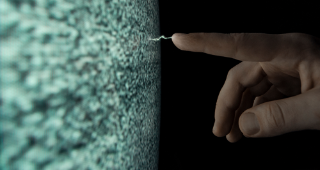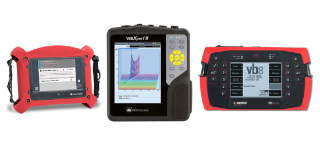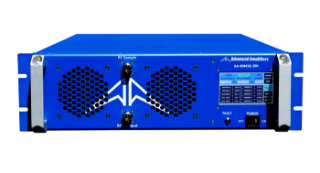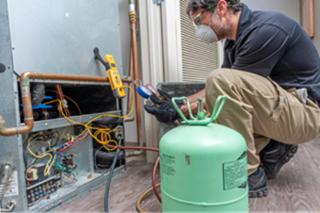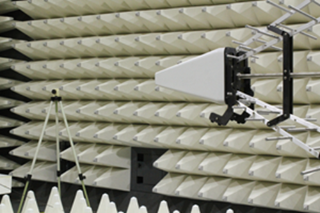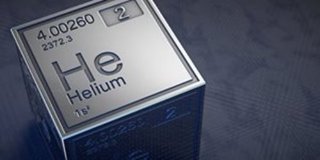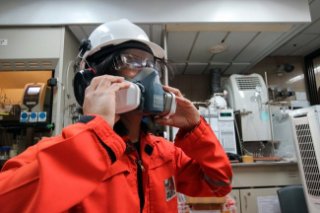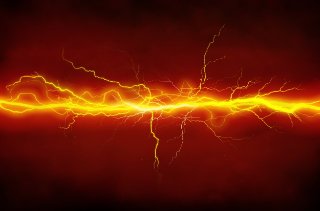ATEC Blog
IEC 61000-4-2 is a test standard that focuses on electrostatic discharge immunity for electrical and electronic equipment. This standard typically updates every few years, with the newest version being Edition 3, which released earlier this year. Read this blog to learn about some of the biggest changes and additions made between edition 3 and edition 2 of IEC 61000-4-2.
This blog will discuss what acoustic imagers are and how they are used to locate gas leaks. These devices have multiple small microphones that are used to triangulate the position of gas leaks and partial discharges. They are useful for finding problems with leaks that can reach up to 100kHz, which goes far beyond what the human ear could process and locate.
Check out our comparison chart to find out which of our recommended vibration analyzers suits your testing needs.
EVSE, or electric vehicle supply equipment, transfers electrical power from a power source to the electric vehicle. Power grids give power to the EVSE, and that EVSE is what recharges the car’s battery. These devices can differ depending on factors such as power, brand, and age. Keep reading this blog to learn more about what EVSE test equipment and what test standards they must follow.
In this blog, ATEC will compare SSAs and TWTAs to determine which amplifier may be best for different testing requirements based on factors such as efficiency and testing speed. They will also look into different types of Solid State and Traveling Wave Tube amplfiers that can be rented from ATEC.
This blog will discuss the test standard IEC 61000-4-13, which defines the immunity test methods and levels for harmonics and interharmonics voltage levels that could be present on low voltage power networks. It targets electrical and electronic equipment with a rated current of <16 A per phase at disturbance frequencies ≤2 kHz (for 50 Hz mains) and ≤2.4 kHz (for 60 Hz mains).
In this blog, ATEC discusses MEMS sensors, or Micro-Electro-Mechanical System sensors, which process physical information and turn it into data the device can process and respond to. Additionally, ATEC will explain how MEMS sensors are tested and the industries where they are commonly applied.
DLRO testing, or Digital Low Resistance Ohmmeter testing, is a type of continuity testing designed to measure low electrical resistances (<1 ohm) for electrical components and connections. These tests find weak connections, contaminants, and corrosion by sending a current through a closed circuit. Closed circuits should allow the electricity to loop throughout the circuit at a consistent rate. If there is an problem in the way the electricity flows through the circuit, the DLRO will discover what the issue is.
In this blog, ATEC will discuss RF amplifiers and their uses in electronic warefare and GNSS signal jamming/spoofing. ATEC will additionally discuss what GNSS signal jamming and spoofing are and where they are commonly used.
SB 1206 is designed to lower the usage of Hydrofluorocarbons (HFCs) that have high global warming potential (GWP). These HFCs are typically used in refrigerants and air conditioning, providing wide temperature ranges at low power in exchange for their large contributions to global warming. In this blog, ATEC will go over what the SB means for HFCs moving forward and how they will affect the future of refrigerants.
In this blog, ATEC will discuss what radiated immunity testing is, what equipment is used to perform it, and what standards it must follow. This is one of the four primary forms of EMC testing which also includes radiated emissions, conducted immunity, and conducted emissions.
This blog will discuss seven methods of helium leak detection that are utilized in a variety of industries, such as automotive and pharmaceutical. The seven methods included this blog are: spray, vacuum hood, sniffer, pressure accumulation, suction cup, bell jar, and bombing.
In this blog, ATEC will discuss the key industries where helium is used for leak detection. The four industries that we will talk about include: aerospace & aviation, automation & transportation, HVAC & refrigeration, and pharmaceutical & medical device manufacturing
Over the last five years, helium has almost doubled in price per cubic meter. Helium is used in a wide variety of industries for a plethora of purposes such as gas leak detection. In this blog, ATEC will discuss why this price increase is happening and any potential trends that may be set for the future.
Air respirator fit testers are designed to make sure respirators fit comfortably and provide the expected protection. They find leaks or gaps in respirators that could allow unwanted gases to enter and harm the user. This blog will go over the use cases for these devices and why they are important.
Accelerated Aging Testing increases the severity of environmental factors to gather data. AAT subjects materials, components, or finished products to elevated stress conditions—such as extreme temperatures, humidity, UV exposure, and mechanical stress—to evaluate their long-term performance. This blog will cover why they are important, what industries they apply to, what standards they follow, and finally, how ATEC can help you meet your testing goals.
As the automobile industry shifts towards electric mobility, EMC testing becomes increasingly vital to ensure that electric vehicles (EVs) function safely amidst electromagnetic interference. ATEC is here to provide a thorough overview of EMC testing's role in the EV landscape, detailing the necessary tests, standards, and equipment to maintain vehicle reliability and compliance in electromagnetic environments.
ATEC compares the Fluke 1735 and Fluke 1736 Three-Phase Power Loggers, outlining their specifications, uses, and suitability for different professional needs in electrical testing. We also promotes the benefits of renting Fluke equipment, emphasizing cost-effectiveness, flexibility, and access to high-quality, reliable test tools without a large upfront investment.
Wondering how to choose a transient generator for IEC 61000? ATEC covers all the steps.
The Fluke Networks DSX-5000 is one of our most popular rentals. Join ATEC as we break down its features!
